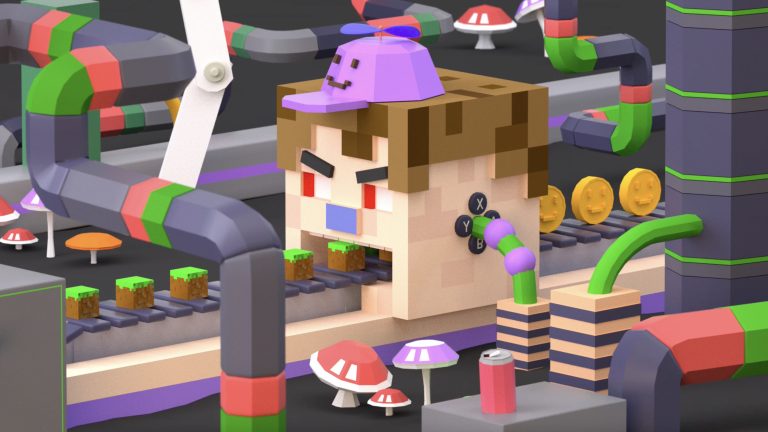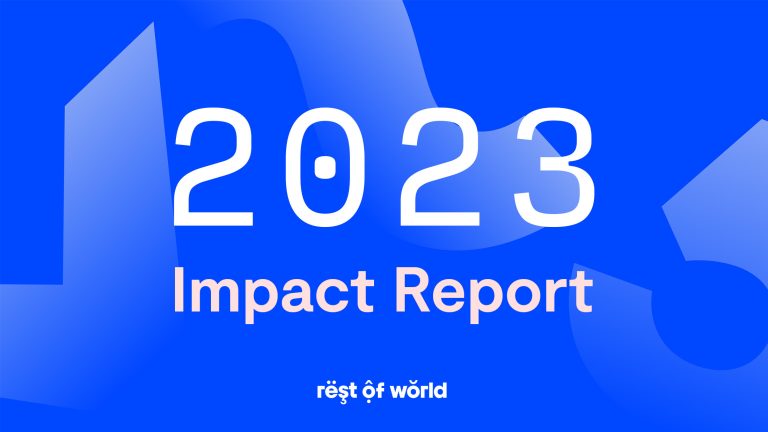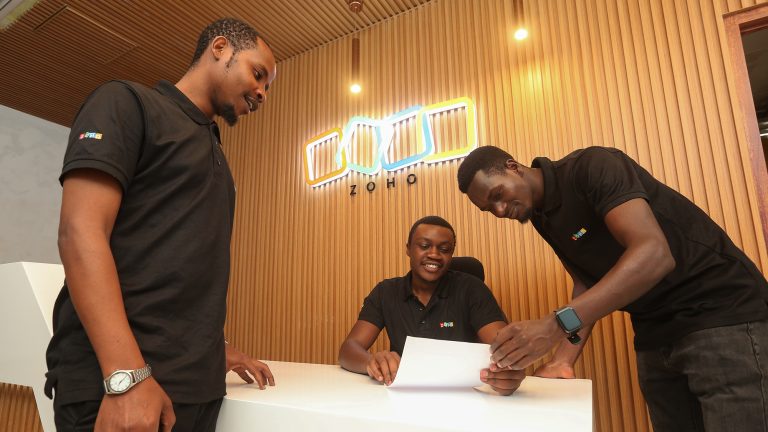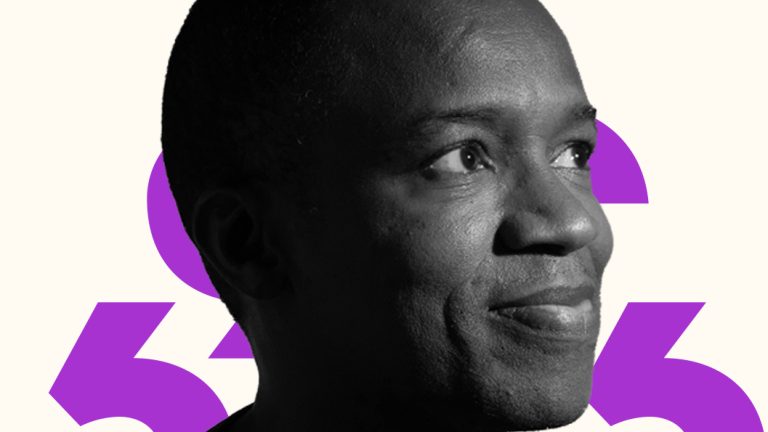One day in February, Wiktor Daniec stood in a medieval town of his own creation. Daniec, who lives in Warsaw, Poland, owned the land, on which he’d built a terrace of houses. He used the pastures behind them to farm commodities like wool, which he sold to invest in new plots of land and increase the scale of his medieval-themed kingdom, which had earned him more than $1,000 in just over a month. Daniec’s property is part of a virtual gaming world known as Critterz, and exists within Minecraft, the blocky sandbox game popular with children and adults worldwide.
Created in late 2021, Critterz incorporates nonfungible tokens (NFTs) and cryptocurrency into the Minecraft universe, bringing a “play to earn” model to the best-selling video game of all time. Players need to own an NFT to enter the Critterz server; once inside, they can earn an in-game cryptocurrency that can be traded for real money. They can buy plots of land in the Critterz world, also represented as NFTs, and sell the constructions they build on them, like Daniec’s medieval houses, to other players.
It was a new experiment in play-to-earn gaming, hot on the heels of Axie Infinity, the figurehead Web3 game from developer Sky Mavis that had attracted thousands of players, especially from low-income countries such as the Philippines. After interest in Axie Infinity collapsed, following a plummeting in-game economy and a $620 million hack, many players moved to other play-to-earn games, including Critterz.
Critterz hoped to address one of the primary criticisms Axie Infinity faced: that players were motivated much more by profit than by a desire to play the game itself, as the game alone simply wasn’t compelling enough. “We just had an idea, what if you can make an existing game play-to-earn?” Emerson Hsieh, a co-founder of Critterz, told Rest of World. “Minecraft is an established game that we know people want to play.”
For a while, it worked. Some Critterz players told Rest of World that, at one point, they were earning more than $100 a day playing the game. At its peak, it had around 2,000 daily players, some of whom enlisted other players to help build their in-game empires for a cut of the crypto they earned. One U.S. player, who goes by “Big Chief,” described how his team, composed largely of young people in the Philippines, gathered building materials for him. He then paid professional Minecraft builders around $10,000 in crypto to turn those materials into a lavish casino.
“I have a lot of kids that play for me, and they play because they want to make extra money in a country that’s really just locking them down,” he said.
But, as with Axie Infinity, once the game became more popular, the value of its crypto token began to drop. Worth 85 cents at its peak in January, it had decreased to around 3 cents by May. But the depreciation was gradual, and many players continued playing and building.
Then, on July 20, 2022, in a post on the Minecraft website, developer Mojang Studios dropped a bombshell: Minecraft would not support integrations with NFTs. The company laid out its position and stated in bold text that “blockchain technologies are not permitted to be integrated inside our Minecraft client and server applications nor may they be utilized to create NFTs associated with any in-game content, including worlds, skins, personal items, or other mods.”
For Critterz, the implication was existential. Although Mojang’s announcement did not detail how its new policy would be implemented, it seemed likely that a failure to comply with the new rules could lead to the end of the Critterz Minecraft server and the collapse of its in-game economy. Players who had paid thousands of dollars’ worth of cryptocurrency for Critterz NFTs saw their investments plummet in value, and those who had been making money playing the game had their incomes vanish.
As he read the announcement on his phone in July, Daniec rushed from the living room of his parents’ house to his bedroom upstairs in a state of panic. Over six months, he’d climbed the game’s complex hierarchies, starting as a basic player and going on to manage thousands of dollars worth of NFTs. He’d even thought about developing his own Minecraft NFT game. “I love two things, Minecraft and NFTs, but the former rejected the latter,” he told Rest of World. “It crushed me.”
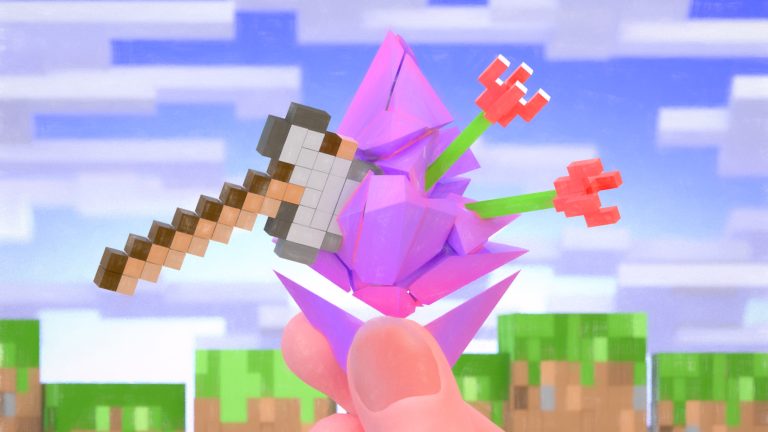
The idea for Critterz emerged in October 2021. At the time, Hsieh, then 22, ran a startup in California with his brother, Morris, supported by the accelerator Y Combinator. Their company, called Palifer, produced AI software to sift through various reports and identify failure-prone components in heavy industry. The company’s clients included a division of Germany’s national railway company, Deutsche Bahn.
Towards the second half of 2021, as the company hit a lull, Hsieh began shifting his focus to the booming NFT space. He found inspiration in NFT projects like Anonymice, EtherOrcs, and Furballs, as well as Axie Infinity, which had 2.7 million players at its peak. Although Axie Infinity was popular and had a busy economy, critics complained that the game itself wasn’t very fun. Hsieh had the idea to start with a fun game and add NFT elements onto it.
“Axie Infinity was essentially building its own game from scratch,” he told Rest of World. “Minecraft is the most popular game of all time, and we wanted to see whether it was possible to integrate it with Web3.”
“I love two things, Minecraft and NFTs, but the former rejected the latter. It crushed me.”
Minecraft allows players to create their own versions of the game and host them on individual servers. Server operators govern these Minecraft worlds and can alter their properties, including the time of day, where players spawn, and what the environment looks like. It’s how you end up with Minecraft worlds that emulate the Pokemon universe, or that allow players to build pirate ships and sail the oceans.
But Hsieh and his two co-founders had something else in mind: a Minecraft “metaverse” where players could be remunerated for their time. Land and buildings could be bought and sold as NFTs on the Ethereum blockchain.
“That was really interesting to me, that people could just make a living by creating things on the server,” Hsieh said. “We’re able to give creators complete ownership of what they create.”
Hsieh and his fellow co-founders started a Critterz Discord channel and posted a link to it in a tweet on October 31, 2021. The Discord channel attracted almost 4,000 people overnight. “That’s when we knew we had an idea,” he said.
In late 2021, the team created a Minecraft server to host Critterz. About a month before launching it, they reached out to Mojang Studios to inform them of their plans and ask about blockchain integration. In emails reviewed by Rest of World, the company’s intellectual property enforcement team told Critterz that it had “no specific guidance at this time.” But the co-founders knew there was a degree of risk that Minecraft might go on to make rules around NFTs. “We knew that it was always a possibility,” said Hsieh.
In the last week of December 2021, the Critterz team created 2,650 NFTs: pixelated skins that wrap around Minecraft characters to make them look like cats, frogs, mice, and other creatures. While the tokens were collectible in themselves, they also enabled the holder to enter the Critterz Minecraft server.
The NFTs were free to “mint,” meaning that when they were initially created, anyone could claim one and would only have to pay the Ethereum transaction fee, known as “gas,” to do so. But, within two hours, they were all snapped up, and soon, in high demand. Within weeks, they went from being worth almost nothing to thousands of dollars; by January 10, 2022, they were being sold for more than $7,000 each on a secondhand market, which was hosted on the popular NFT marketplace OpenSea. Critterz was soon hiring engineers and moderators to work on the project. According to Hsieh, it would go on to have as many as 18 full-time staff members.
Intrigued by the game, in early January, I purchased a Critterz NFT for 1.5 ETH (more than $5,000 at the time). After linking the NFT to a Minecraft account, I could access the Critterz world.
On entering, I found myself in the center of a large, palatial forum, surrounded by four gateways, with different colored towers signaling north, east, south, and west.
Unlike the most basic Minecraft servers, where players are free to delete and place blocks, in this world, every attempt to destroy a block was met by a note: “Sorry, but you can’t break that block here.” In the Critterz server, only the owner of a plot of land — the person who has the associated NFT — can modify it.
By spending time in the Critterz world, players automatically earn an in-game cryptocurrency, called $BLOCK. That’s partly why the NFTs providing access had become so valuable. $BLOCK is a type of token on the Ethereum blockchain and can be exchanged for traditional “fiat” currencies, like US dollars, or used to acquire plots of land in the Critterz world. $BLOCK can also be used to purchase in-game items, enabling players to farm their land and sell or trade the commodities they produce.
When I spoke to Daniec, the Polish player, in February 2022, he estimated that people were making between $60 and $130 a day in $BLOCKs. The exact amount would depend on the number of hours they were playing. He claimed to have recently helped his parents out with a small loan repayment, thanks to his Critterz gains, and said that he shared some of his earnings with his younger cousins to incentivize them to play too. “Now their moms can’t tell them to stop playing [be]cause it’s unproductive, they can tell back that they’re earning money,” he said.

Naturally, the cost of buying a Critterz NFT made the game inaccessible to many. But, as with Axie Infinity, aspiring players worked around this barrier. Players who owned Critterz NFTs would loan them out using a secure rental mechanism built into the game, temporarily transferring them to players who couldn’t afford one. Those individuals would then use the NFT in their place, for a cut of the $BLOCKs they earned while playing.
On the Critterz Discord server, hopeful renters competed for attention, advertising their commitment to the game. Some even attached testimonials from the owners of the Critterz NFTs they had borrowed in the past, and posted links to a website that tracked how many hours they spent playing each day. A Canadian renter said that he and his brother had a process, whereby one played while the other slept, and vice versa, enabling them to play for an unrivaled number of hours. “I play all day and only stop to sleep,” wrote another.
But, just as in Axie Infinity, some took the renting model further, creating whole “guilds” of players to work around the clock, earning $BLOCKs. A guild owner would buy or rent an NFT, then lend it out to teams of players, often in low-income countries, splitting the profits.
“I have a Guild of players that will play extensive hours on your Critterz each day,” wrote one guild owner in a Discord channel. “My guild plays in 8-hour shifts. We average 16-20 hours, sometimes 22-23 hours per day.”
It was clear from the languages used in the Critterz chat log that almost all guild members, also known as “scholars,” came from low-income countries, and, overwhelmingly, the Philippines. Many were also former players of Axie Infinity, and worked for guild owners that ran Axie guilds too.
Charles Franzis, a 19-year-old student at Bulacan State University, just north of Manila, got into Axie Infinity last October. He joined a guild called Big Chief Academy and enrolled as a scholar, hoping to earn some extra money that would support him through his studies.
“At first we are earning good money, but the Axie market started to go down,” Franzis told Rest of World.
The owner of his guild, Big Chief, suggested Critterz as an alternative. It was an ideal situation for Franzis, who had played and enjoyed Minecraft before. He described Critterz as the best NFT game he had ever played, and said that he would average eight hours of play time a day, if not longer. When busy studying for exams, he would have his cousin step in to play for him.
Web3
- A nebulous term that refers to an imagined next iteration of the web in which cryptocurrency, blockchain technology, and decentralized finance prominently feature
Blockchain
- A way to record information in a decentralized fashion, like a digital public ledger. Cryptocurrency transactions, for example, can be tracked on a blockchain
NFTs
- Nonfungible tokens (NFTs) are digital assets whose ownership is recorded on the blockchain – so even if they’re copied, you can see who holds the “original”
Play-to-earn
- A genre of game in which players can earn in-game rewards that have real-world value, such as cryptocurrency tokens
$BLOCK
- A cryptocurrency token developed by Critterz. Players earn $BLOCK by spending time in the game and can use it to buy in-game items or exchange it for fiat currency
Axie Infinity
- A flagship example of a play-to-earn game, made by Vietnamese developer Sky Mavis. Players earn crypto tokens by training and fighting NFT monsters called Axies
NPC
- Non-playable character. A character that appears in a video game but cannot be controlled by the player, such as a scripted background role
Minting
- “Minting” an NFT is the process of putting a digital asset on the blockchain. The NFT can then be bought and sold, with transactions recorded
In March, Franzis received payment for his first month of work in Critterz: $1,100. It was a windfall. He spent some of the money on a new PC setup and furniture for the family house, and saved what remained. “I used the money to help my family on paying utilities and buying stuffs for our house,” he said.
Big Chief, who is based in the U.S., owns around 60 Critterz NFTs, which, at their peak, were worth more than $300,000 (at the time of publication, they had reduced in value to around $5,000). At one point, he managed around 200 guild scholars in Critterz.
His success as a guild owner is evident in his creations on the Critterz server. Where Daniec’s medieval farm occupies a single plot of land, Big Chief built a huge compound spanning several plots, modeled on the Bellagio Casino in Las Vegas. A fountain, surrounded by villas, sits in front of a huge structure, with the letters “BCA” decorating its main tower.
Unlike Daniec, who had painstakingly, and personally, built his farm from humble beginnings, Big Chief paid professional Minecraft builders from Europe 4 ETH (around $10,000 at the time) to build the casino for him. He was able to get a good deal on the rate because he had his scholars gather building materials, meaning the builders didn’t have to tackle the labor-intensive task of mining all the necessary items themselves. Speaking to Rest of World over a Discord call, Big Chief claimed that he was the “largest contiguous landholder in the game,” proudly owning 133 plots of land next to one another (in Critterz, contiguous plots are especially desirable because they enable landowners to build larger structures across plot boundaries).
Big Chief told Rest of World that his scholars were “generally from the Philippines.”
“I think in the Philippines they were able to earn just enough where it was worth their while,” he said. “In Latin America, it was harder to recruit because they weren’t willing to put in the work.”
Big Chief said that he split earnings 60/40 in favor of his scholars, and that, unlike other games like Axie Infinity, most of them actually enjoyed playing Minecraft. “These kids are playing Minecraft, a game that they already liked and played, and earning as much as a CPA (certified public accountant) in the Philippines,” he said.
According to Hsieh, the guilds were never designed to be a part of Critterz. “The guild systems emerged spontaneously,” he said. “It is currently free of regulation, I think we can only wait to see what everything would be like with time.”
“I think in the Philippines they were able to earn just enough where it was worth their while.”
Hsieh acknowledged that many guild scholars come from countries with developing economies, but said that Critterz was also popular in the U.S. “There were also players from specifically American blue-collar families who, during the pandemic, relied on these ecosystems as a source of income,” he said.
Big Chief framed guilds in play-to-earn gaming as a force for good, arguing that they provide people in poorer parts of the world with an opportunity to make money. “That’s why it’s really annoying when people talk about exploitation,” he said. “I couldn’t tell you what the hourly rate comes to, but I could tell you that people make very little money and the cost of living is very low in the Philippines.”
For a while, the economics of Critterz enabled remarkable earnings. The scholars made a lot of money, and owners of NFTs wanted to recover the cost of their investment as soon as possible. “We had to make it a requirement that they play eight hours a day, so it was a full-time job,” said Big Chief. “But they were willing to do it because it was lucrative.”
But Franzis said that after a few months, his earnings dwindled to less than $100 a month. News of how profitable Critterz could be had spread, and the initial boom was over. The value of $BLOCK was driven by supply and demand. The influx of scholars, therefore, caused problems. “All my players are selling their $BLOCK, because they need money to live, as opposed to holding it,” said Big Chief. The scholars were inadvertently contributing to a decline in their own income by boosting supply beyond demand.
The value of $BLOCK continued to drop, and, even before Mojang announced the NFT ban, things were looking dire. But the announcement dealt a seemingly mortal blow. It also didn’t help that Critterz’s most testing times coincided with a wider crash of the crypto and NFT market. The Critterz NFT that cost me $5,000 is now worth $150. I used the $BLOCKs that I earned while renting out my NFT to purchase six plots of land, and have around 5,000 $BLOCKs left over. In February, those plots were worth a little under $3,000. They are now probably worth less than $30.
On July 20, the day of the Mojang announcement, the value of $BLOCK in terms of Ethereum nearly halved, from around 0.0046 cents to 0.0022 cents. “It couldn’t have been worse timing for the game,” said Big Chief.
Even so, he remains loyal. “I expected the coin to go down to basically zero, but it didn’t,” he said. “It’s been pretty resilient given the circumstances.”
Big Chief said he felt bad for his guild members who were no longer able to make money from Critterz. “I treated a lot of these kids like they’re my kids, so it’s kind of sad now that I can’t really offer them much. Before, I was really helping a lot of these kids, giving them an opportunity to make some extra cash for their families and it just kind of sucks that I can’t really do that right now,” he said.
Franzis stopped paying Critterz altogether. It was no longer profitable, and around July, he found he wasn’t able to enter the Critterz server — he’s not sure why. “Maybe one of the mods banned my IP address,” he said. “I know some of the mods have a bad impression of our guild.”
For the time being, Franzis is back on Axie Infinity, but said he is only making $10 to $15 a month.
Despite the fact that he had some of his best play-to-earn experiences in the Critterz Minecraft server, he doesn’t seem particularly bitter that those days appear to be over. “I just feel bad for the investors,” he told Rest of World. “They will surely lose lots of money.”

In the wake of Mojang’s announcement that it would not allow NFT integrations with Minecraft, the Critterz server has become noticeably quieter. Months ago, when I met up with Daniec, the game felt populated and alive. After the recent announcement, it felt almost like I was playing on my own. When I entered the game on August 12, there were just eight players on the server — a far cry from when it saw around 2,000 players a day. At one point, the Critterz world had been so popular that the developers scrambled to remove a 500-player cap.
There is still little clarity regarding how Mojang’s stance on NFTs will affect Critterz and other Minecraft games that use NFTs, such as NFT Worlds. The terms that dictate how people are allowed to use Minecraft are contained within the game’s end-user license agreement (EULA). Critterz’s future will ultimately be determined by any updates made to this agreement, which are expected very soon, according to the initial announcement.
“We still don’t fully know what the EULA is going to look like,” Nabeel Sheikh, an engineer for Critterz, told Rest of World. For the time being, he said that it’s hard to see a path forward for Critterz that involves Minecraft.
That leaves the team with the short-term option of taking all of the Critterz plots and assets “off-chain” — off the blockchain — in order to avoid deletion of their server. “We would take a snapshot of the current ownership and replicate that on a kind of database,” Sheikh said. “The difference is that these items now can’t be traded on OpenSea.” This would mean that people could still play in the Critterz world, but they wouldn’t be able to buy and sell NFTs related to their in-game assets, nor would they be able to earn $BLOCKs.
Alternatively, Sheikh said, Critterz could turn to an open-source Minecraft “equivalent” or even develop its own game, but this would be complex and time-consuming, and would not be without compromises too.
“Game development takes a lot of time and it’s one of the most complex software challenges that exists. You have sound, art, gameplay, game design — that’s just on the non-programming technical side of things,” he said. “If we create something that is similar to Minecraft, we can land in hot water there too,” he added, referring to potential copyright issues.
In Mojang’s announcement, the developer explained its decision to eliminate NFTs on the basis that they “can create models of scarcity and exclusion that conflict with our Guidelines and the spirit of Minecraft.” Rest of World reached out to the developer to clarify its plans around NFT integration, but a spokesperson declined to make any further comments.
Despite the difficulties, Sheikh isn’t angry at Mojang. “It’s their business at the end of the day and optics is a large part of that. Making sure that they are aligned with a certain vision, that’s entirely up to them,” he said. “And I think, moreover, it’s about making sure that the way they’re perceived by their own players is in a positive light and, right now, NFTs and gamers don’t mix. It’s quite oil and water.”
According to Sheikh, much of the gaming community harbors disdain towards NFTs. He believes that this is in large part due to big corporations like Ubisoft forcing them into their games. He also acknowledged that the NFT space has been plagued by scams.
It’s hard to ignore a rift that has arisen in Critterz, between players that view the game as a fun opportunity to make some extra money, and others who see it as an investment or full-time job. Sheikh conceded that, often, when economies are introduced to a game, money becomes a distraction; playing can feel like a chore. “If your game isn’t great, people don’t want to spend hours and hours in the game. You don’t want your players to feel like prisoners,” he said.
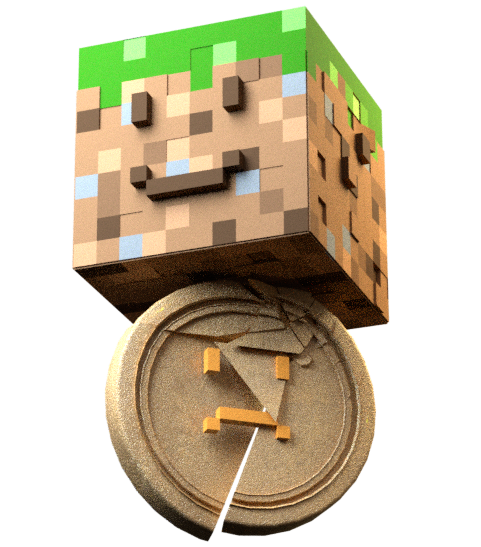
Warren Woodward, co-founder of Upptic, a company that provides marketing services to mobile and Web3 gaming companies, including the developer of Axie Infinity, told Rest of World that he believes Web3 capabilities have the power to enhance traditional game design, but earning money cannot be the focus if they are to survive.
“We have the data on that,” Woodward said. “It’s not a way that you can build sustainable, fun gaming economies. If the main driver is profit, then that does incentivize potentially toxic behaviors within the gaming ecosystem.”
Woodward thinks guilds like Big Chief’s will have limited opportunities in the future but may remain in some fashion. “What you might see in the end is something that maybe looks halfway between what a guild is now and a traditional esports team, where it’s more about fostering environments to create great players for some of these games, rather than just the grind,” he said. “There’d be value in a guild of players that train together to develop strategies together to get better gameplay, but no one’s going to be getting rich off of repetitively clicking a button over and over.”
He also dismissed the idea of third parties integrating blockchain technology into existing popular games as unsustainable, since developers run the risk of being “completely destroyed in one press release.”
“You don’t want your players to feel like prisoners.”
Not everyone shares the same outlook on play-to-earn gaming. Mikhai Kossar, a chartered accountant and a member of Wolves DAO, a group that consults with NFT gaming projects in the early stages of their development, told Rest of World that some players will always go wherever they can make more money. “They will play Pac-Man if they can earn more,” he said.
According to Kossar, NFT renting mechanisms in play-to-earn games are important to keep them accessible to poorer players. “You have people that have money, but don’t have the time to play the game, and on the other hand, you have people that don’t have money but have time,” he said.
He sees a future, however, where guild ownership and management could upend the model of wealthy Western players managing those in low-income countries. “Filipinos could band together to buy some assets and then rent them out to themselves and make money that way,” he said.
But he also envisions NFT games that could exploit the wealth gap between players to deliver a different experience. “With the cheap labor of a developing country, you could use people in the Philippines as NPCs (“non-playable characters”), real-life NPCs in your game,” said Kossar. They could “just populate the world, maybe do a random job or just walk back and forth, fishing, telling stories, a shopkeeper, anything is really possible.”
Hsieh maintains confidence in Critterz but acknowledged that it was an experiment at the very least. It was a profitable one at that. He estimates that by taking a 5% cut of all transactions of Critterz NFTs and plots, the project has made in the region of 450 Ethereum so far, which would amount to around a million dollars. But it also took its toll on him.
“I was staying indoors all day long, just coding,” he said. “I was mostly just staying indoors in our suburban house, talking to people, video calls, just working all day long. I’m very cautious at this point of letting anything get in the way of my own health and mental well-being.”
And Hsieh remains enthusiastic about the NFT gaming space. “I believe that as technologists, it’s our job to seek out and build new technologies,” he said. “I’m excited to see what other people will build because it’s still very early, in terms of what this new technology can achieve, and what kind of social dynamics and impact it can have on its users and society in general.”
Big Chief is now tentative about making any more investments in play-to-earn gaming, which he considers to be “the wild wild west of crypto.” Unlike with decentralized cryptocurrencies like Bitcoin or Ethereum, you have developers that “are in complete control of an economy that can be fairly large,” he said.
Nonetheless, he is waiting for a cue to mobilize his army of scholars, in search of the next remunerative opportunity in which he can put them to work. “I’ve just got to be patient,” he said.
